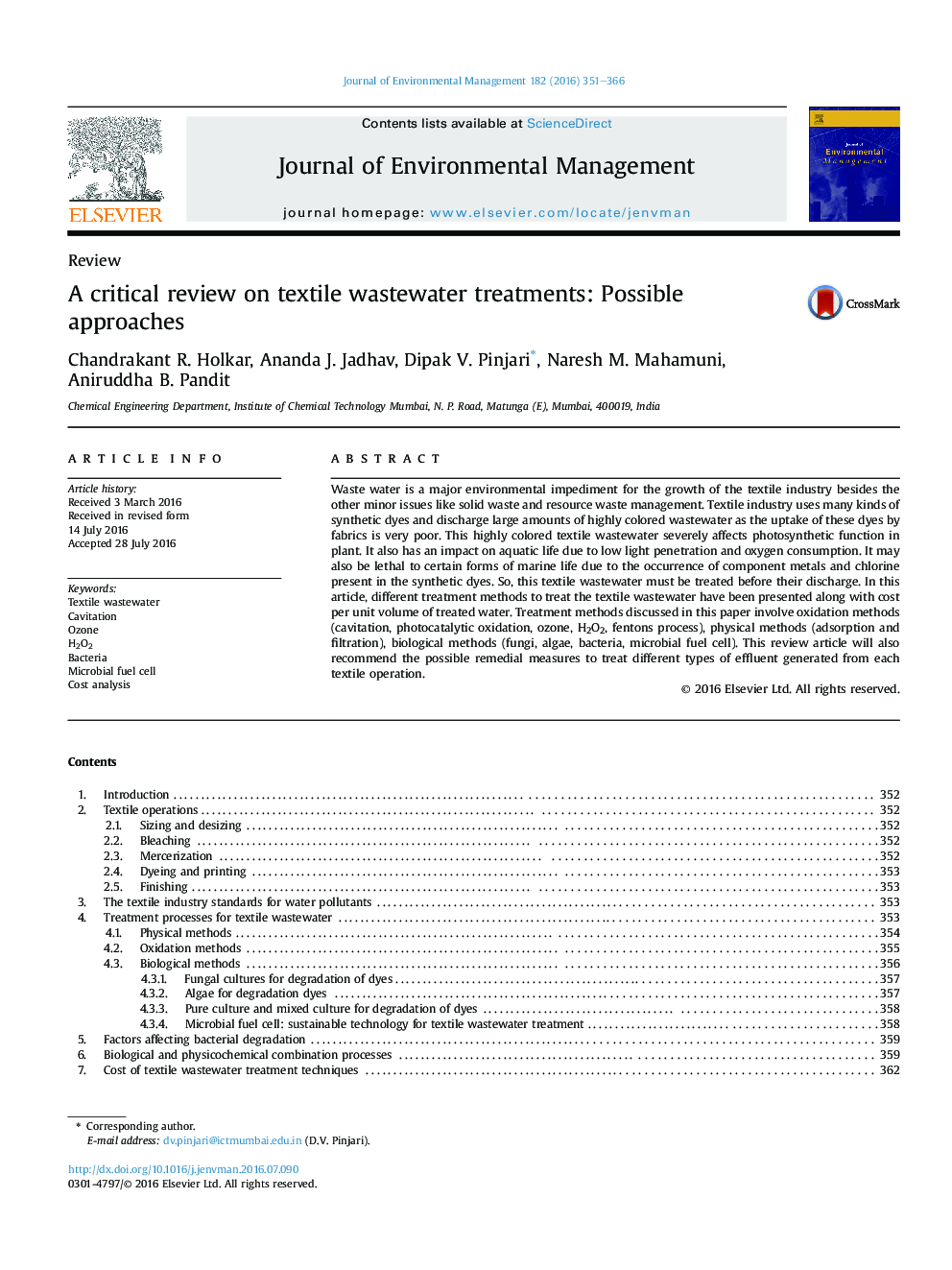| Article ID | Journal | Published Year | Pages | File Type |
|---|---|---|---|---|
| 7479133 | Journal of Environmental Management | 2016 | 16 Pages |
Abstract
Waste water is a major environmental impediment for the growth of the textile industry besides the other minor issues like solid waste and resource waste management. Textile industry uses many kinds of synthetic dyes and discharge large amounts of highly colored wastewater as the uptake of these dyes by fabrics is very poor. This highly colored textile wastewater severely affects photosynthetic function in plant. It also has an impact on aquatic life due to low light penetration and oxygen consumption. It may also be lethal to certain forms of marine life due to the occurrence of component metals and chlorine present in the synthetic dyes. So, this textile wastewater must be treated before their discharge. In this article, different treatment methods to treat the textile wastewater have been presented along with cost per unit volume of treated water. Treatment methods discussed in this paper involve oxidation methods (cavitation, photocatalytic oxidation, ozone, H2O2, fentons process), physical methods (adsorption and filtration), biological methods (fungi, algae, bacteria, microbial fuel cell). This review article will also recommend the possible remedial measures to treat different types of effluent generated from each textile operation.
Related Topics
Physical Sciences and Engineering
Energy
Renewable Energy, Sustainability and the Environment
Authors
Chandrakant R. Holkar, Ananda J. Jadhav, Dipak V. Pinjari, Naresh M. Mahamuni, Aniruddha B. Pandit,
